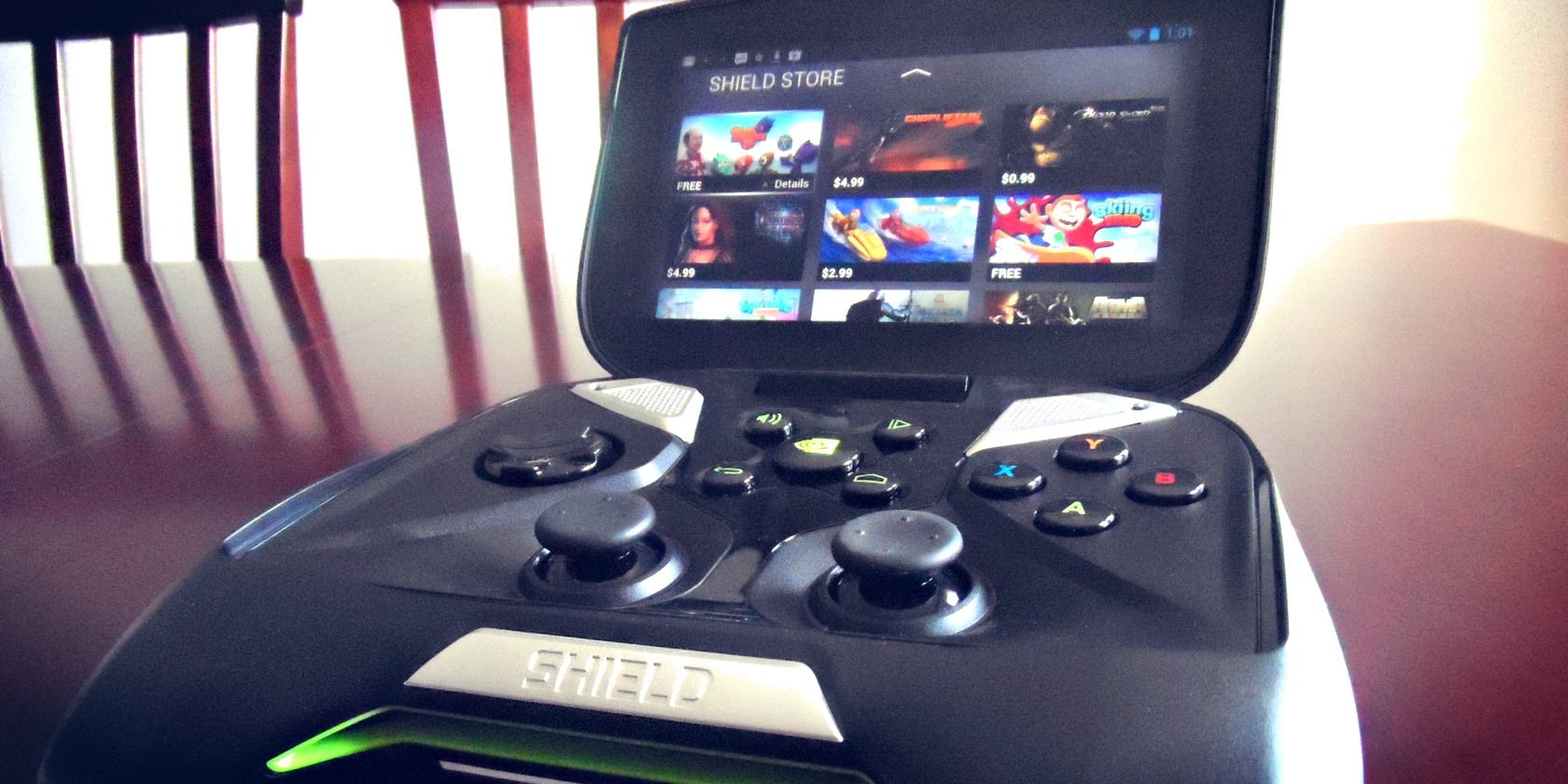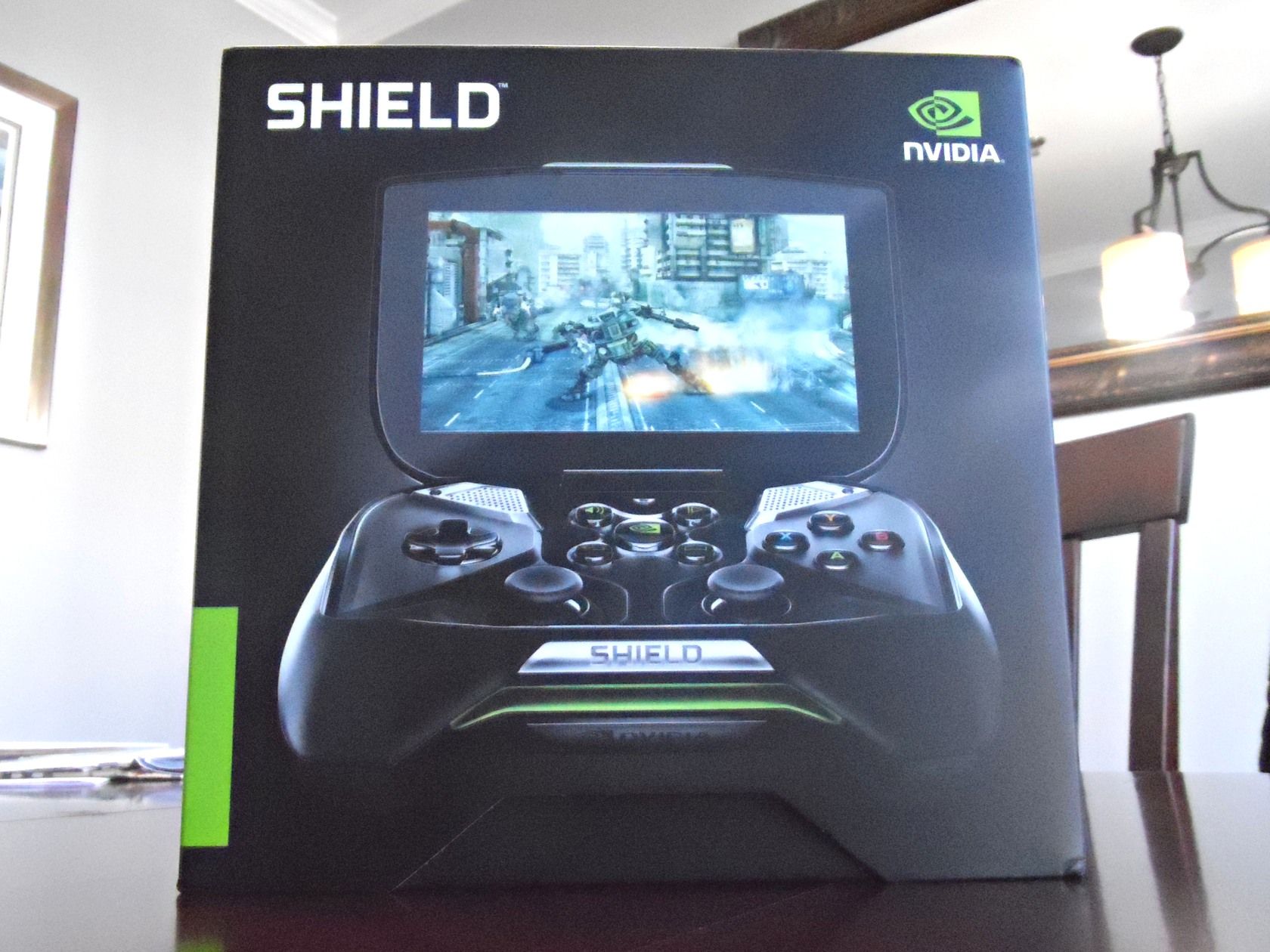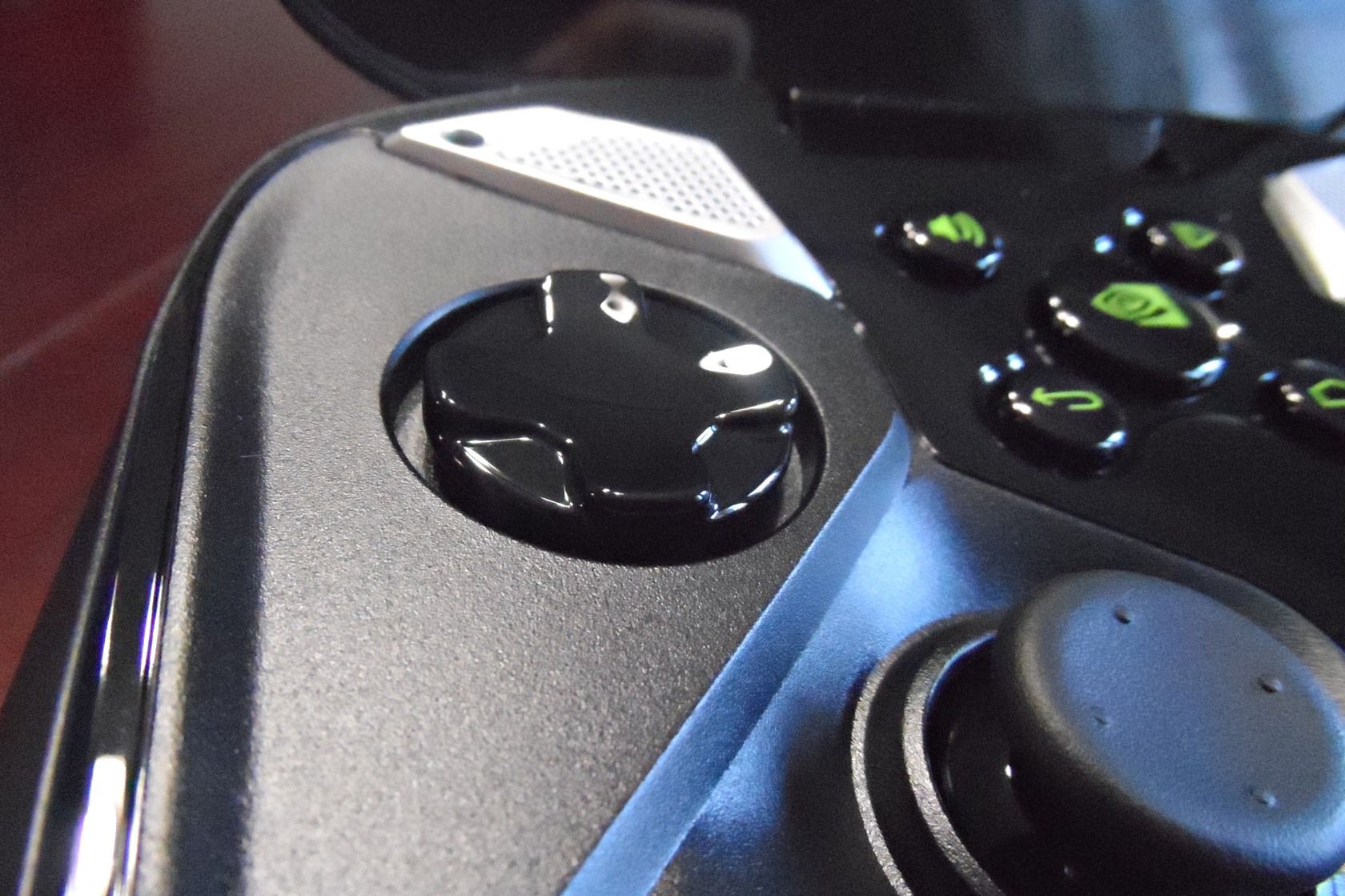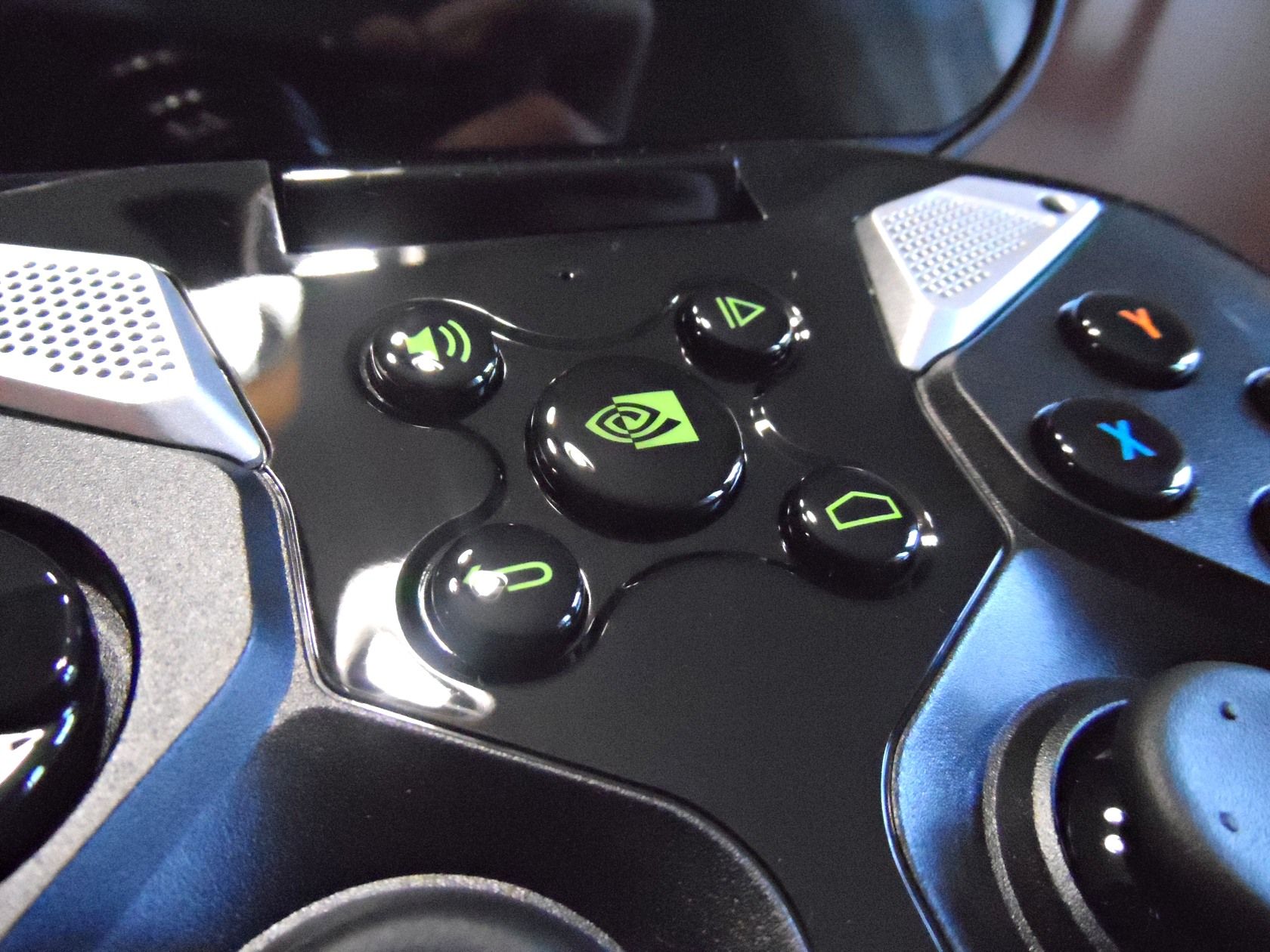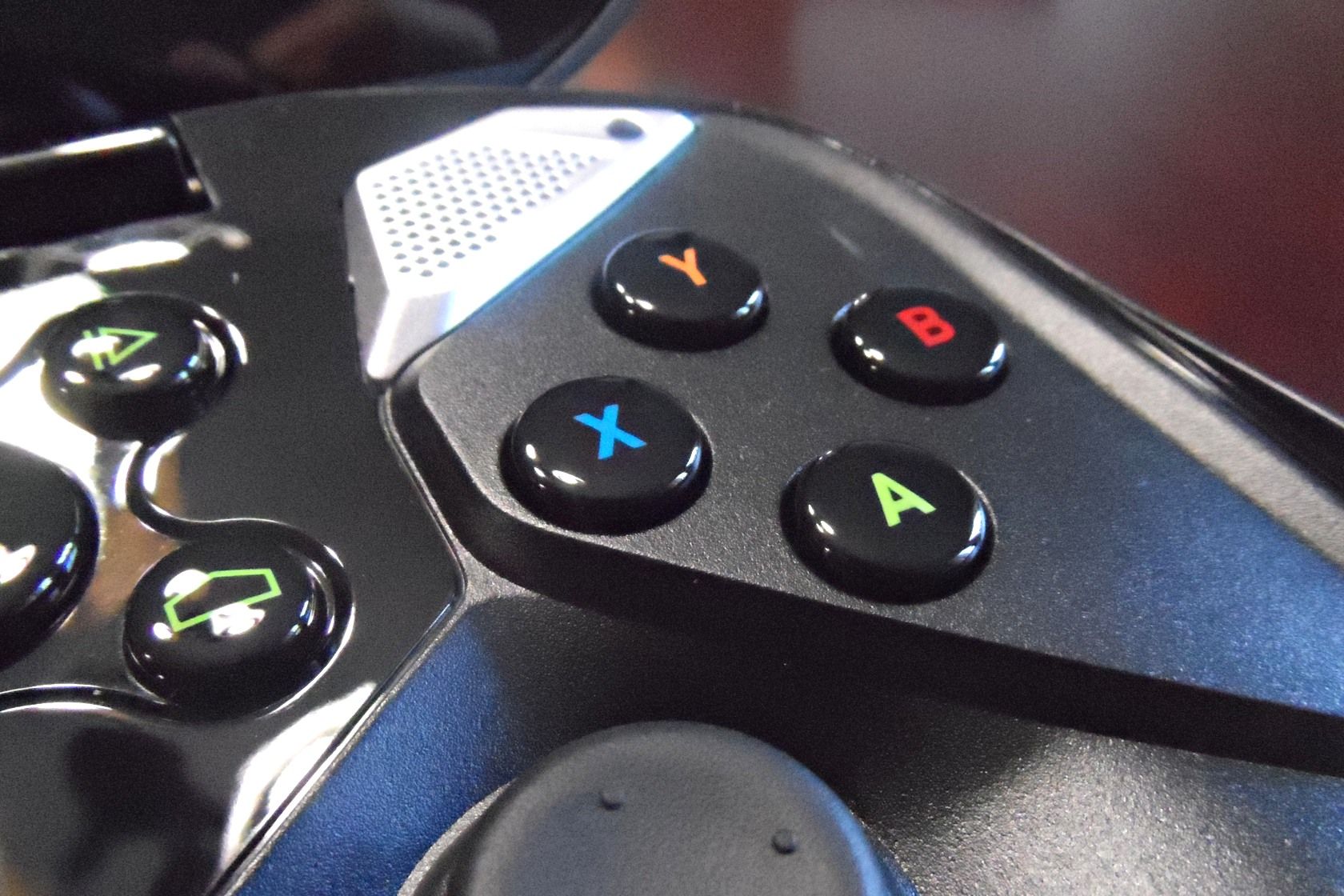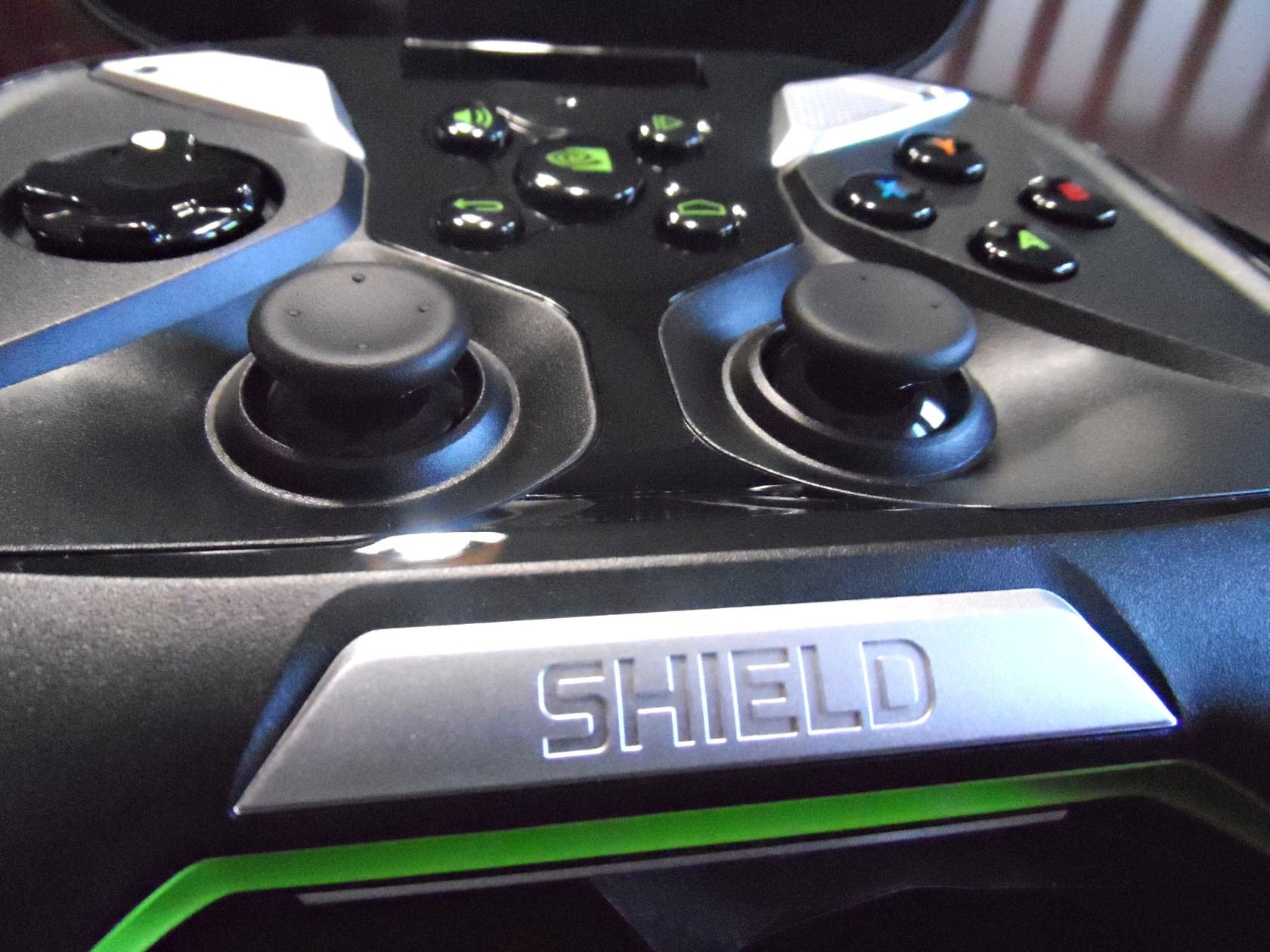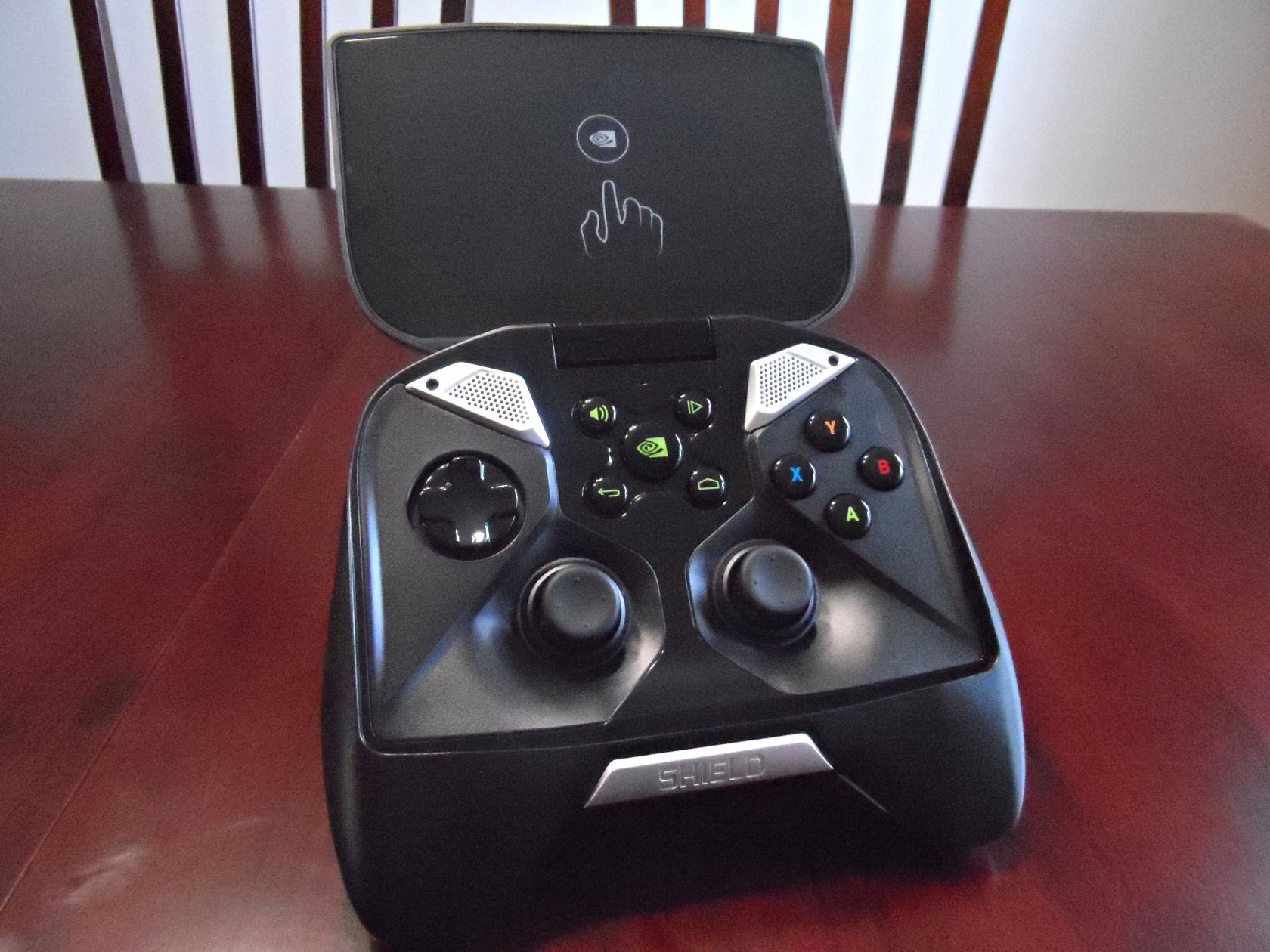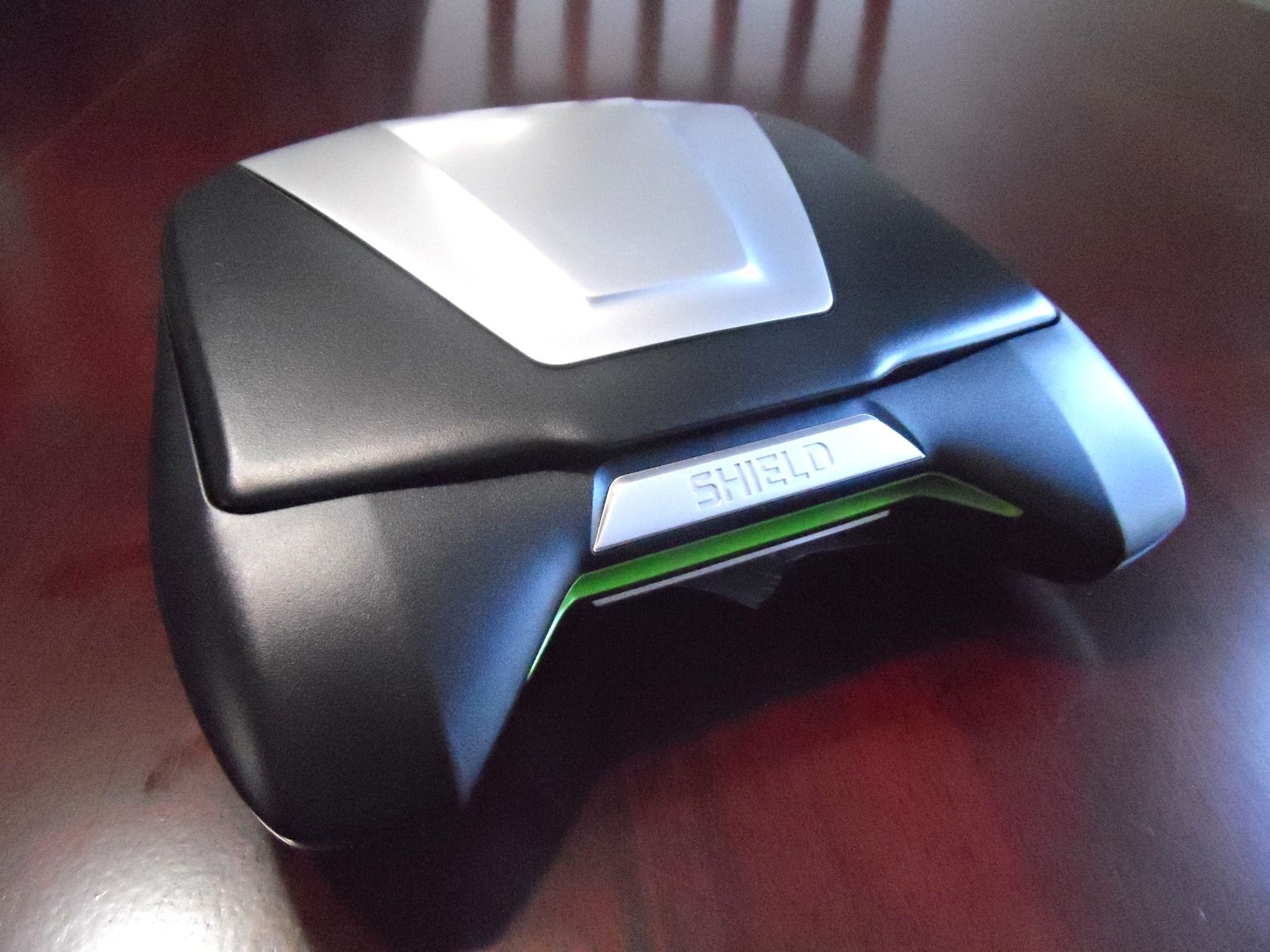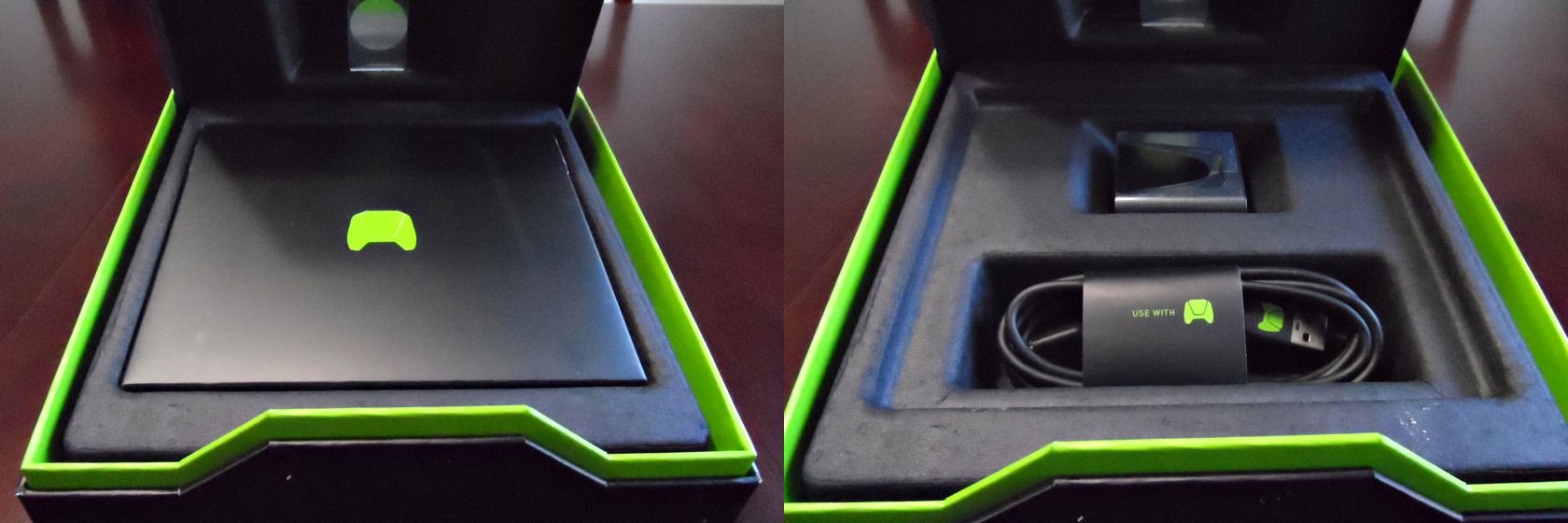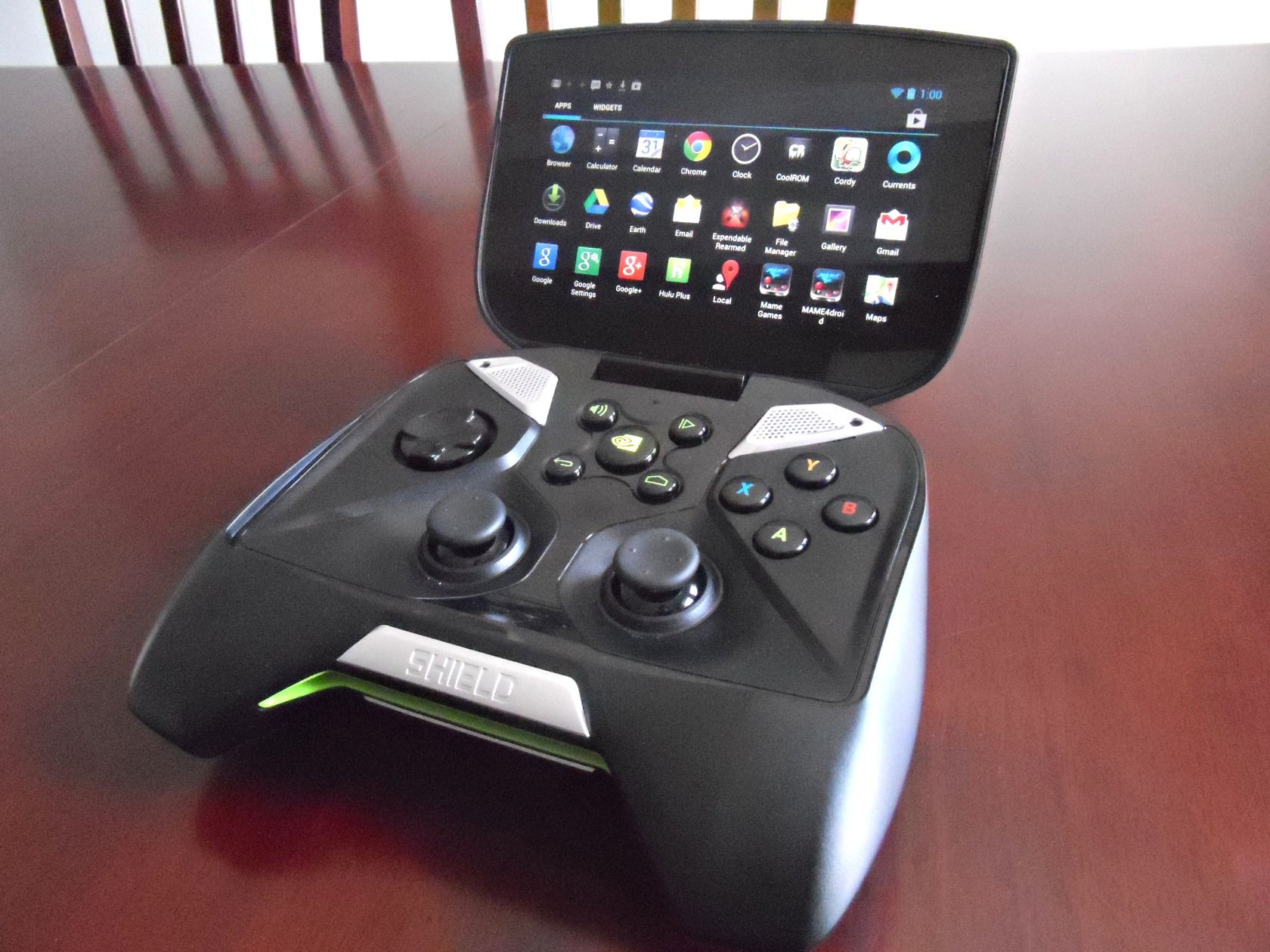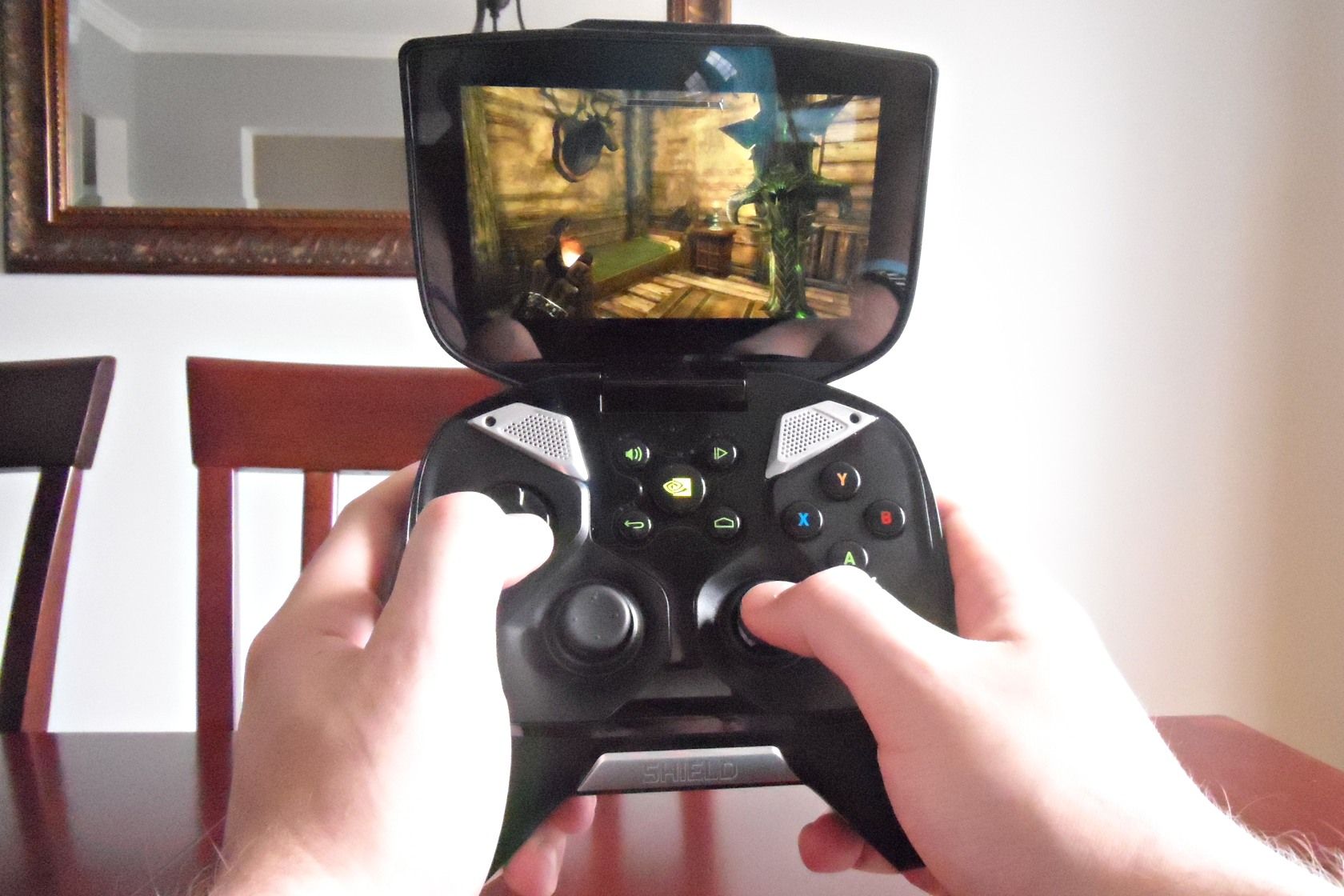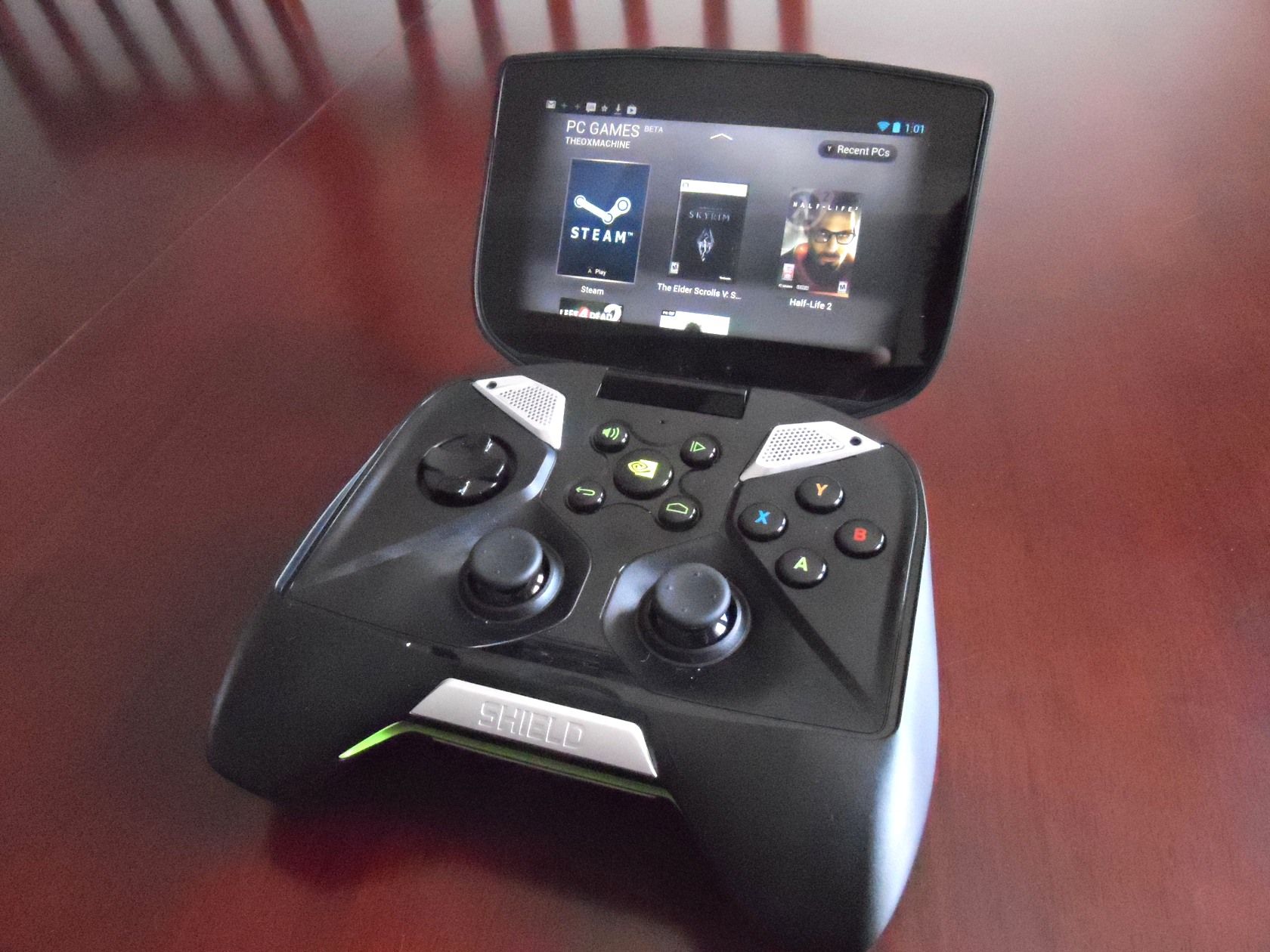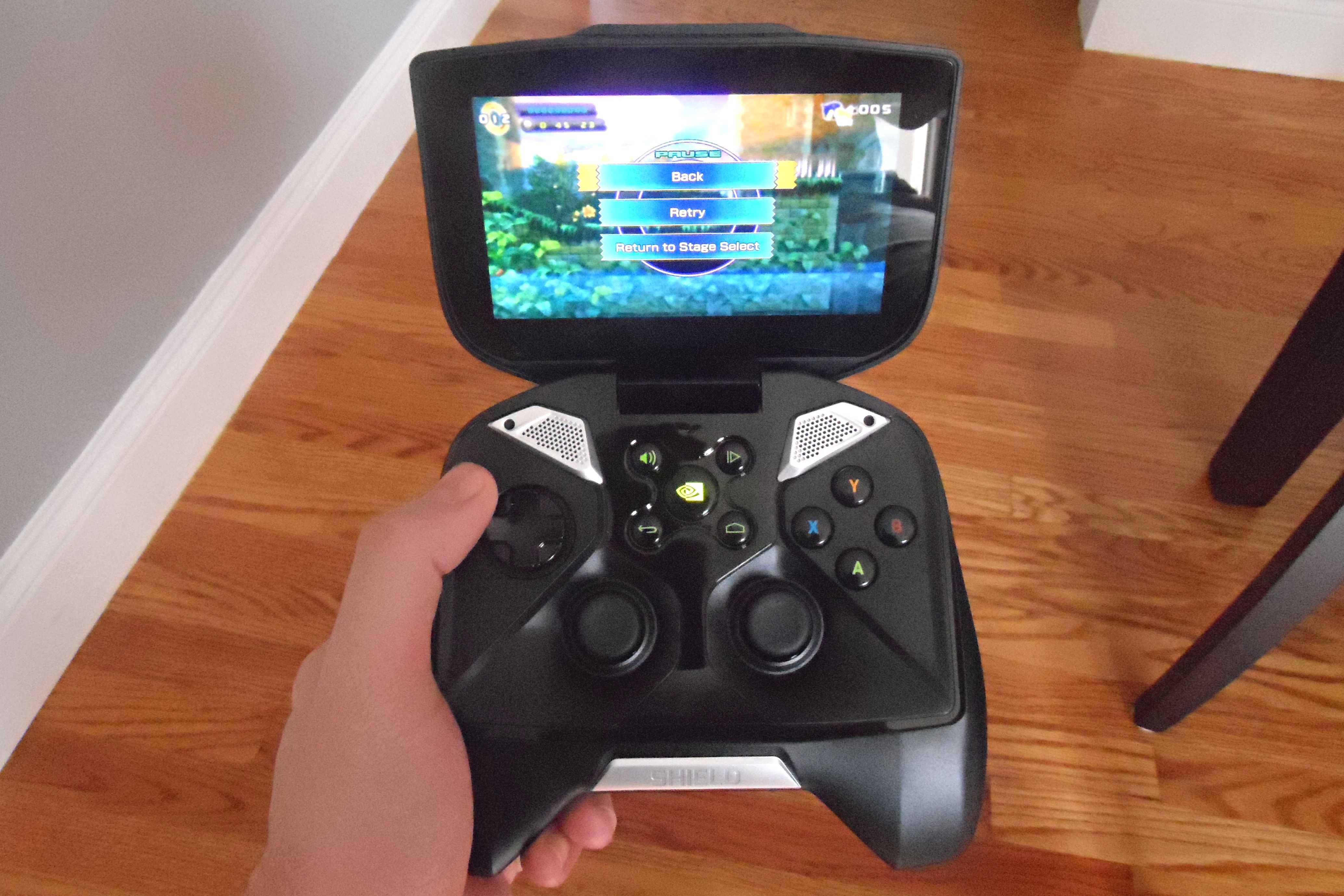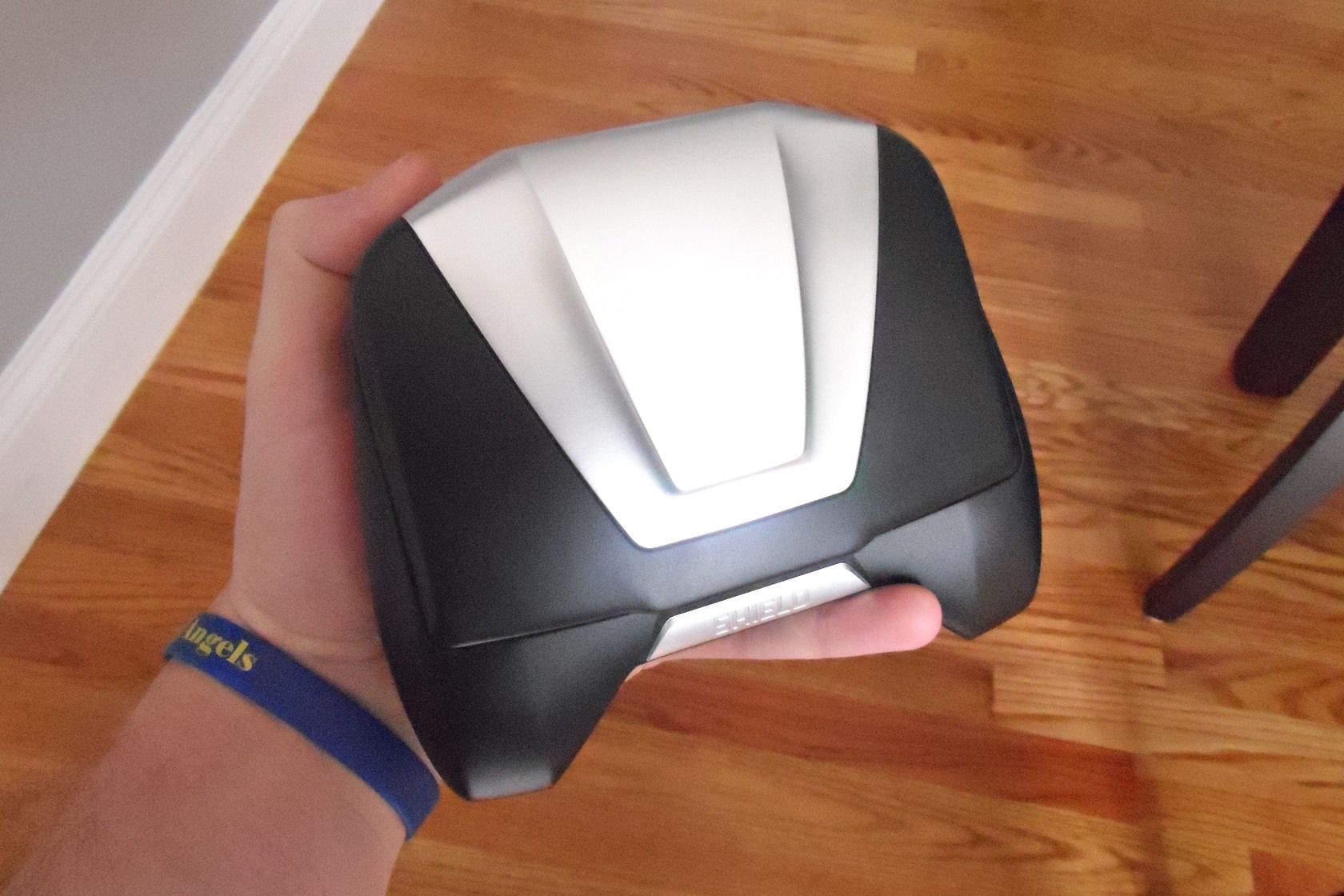NVIDIA Shield
Overall, I really like the NVIDIA Shield. I might even say I love it, at least, I love the potential. The PC streaming feature is still in beta, and it's something that could be incredible once finalized. The controller feels good, but the games available are mediocre.
Recently, we reviewed the Wikipad, which managed to make its way to market before NVIDIA's highly anticipated Shield. Ever since NVIDIA showcased the Shield at CES, I've found myself more and more fascinated by it. After enjoying other Android gaming tablets, I assumed I would absolutely love the NVIDIA Shield, which certainly looks like the pinnacle of Android gaming devices.
So does it live up to the hype? Does its powerful Tegra 4 processor make for a gaming experience unlike anything else? Or is it more power than any game can fully utilize? For all these answers and more, keep reading the review to find out.
Guess what? We are actually giving away a Shield to one lucky winner, so you can find out first hand just how good it is as a gaming device. Keep reading through to the bottom of the review to find out how to win.
Introducing the NVIDIA Shield
NVIDIA, a company best known for its graphics cards, is jumping into the tablet space in a big way with the release of the Shield. Now, calling it a tablet probably leads to a very different mental picture than what the device actually looks like. Rather, it looks more like a portable gaming device, what with its 5-inch screen that folds down on top of traditional video game controls.
The Shield has a number of competitors, ranging from other tablets to actual handheld video game consoles. At $299, it's pretty pricey when compared to similar devices. The Wikipad, which is a traditional tablet with gaming controls, comes in at $249. The PlayStation Vita, which is a touchscreen and controller-based video game console and also comes with a $249 price tag. The NIVIDIA Shield costs a little more, but is it worth it? We'll get to that soon.
Design
The NVIDIA Shield's controller has the standard four face buttons, two joysticks, a D-pad, two triggers, two shoulder buttons, and five middle buttons that work both with games and various Android functions.
The controller is very similar to that of the Xbox 360, except that instead of offset joysticks, they are parallel like the PlayStation's controller. This makes it feel quite comfortable for anyone who has played a modern video game console.
The screen is fairly small, but it works well with the device and folds shut to make the Shield easier to carry. It also comes with a gripped surface on the back, which helps you hold the device more comfortably. This textured surface makes it difficult to slide the device in and out of a bag, as it tends to grab, but I think a better gameplay experience is more important, and the grip adds value to that.
The main problem with the design of the device is weight, as it is quite heavy at 579 grams (1.28 pounds). After years of holding a Xbox or PlayStation controller, playing games on the Shield felt a little weird at first. However, I got used to the extra size very quickly, and within a day or two of messing with it, I completely forgot that it was heavier than average.
Stylistically, the NVIDIA Shield is a beautiful piece of hardware. When closed, it's a tiny little package that really looks more like a video game console than a tablet. Since this is aimed at gamers, the styling decision makes sense. While the Wikipad looks like a tablet that happens to be good at playing video games, this is the complete opposite, and I love it.
The box the Shield comes in is surprisingly small, and packs the basic equipment you will need to get up and running – a USB cable, a wall plug, and a quick start guide that will show you how to use everything. It's a nice looking package overall, and it makes a good first impression.
Hardware And Specs
The Shield's specifications are nothing short of impressive. To start with, we have the absolute monster Tegra 4 processor supported by 2 GB of RAM. You'll be hard-pressed to find a tablet that can match the Shield. As we see more tablets with this processor going forward, things will level off, but for the time being, if you want the absolute best money can buy, this is the one you want.
The screen is only five inches, but it looks absolutely stunning with its 1280x720 (294 ppi) resolution. Booting up Skyrim (which we will get to later) on this thing is impressive. The same goes for watching high-resolution videos through Twitch, YouTube, or any other video service.
As for internal storage, the 16 GB included feels like plenty for installing games and the like.
Another important thing to mention about the Shield is that it comes with a mini HDMI port, so you can hook it up to your TV and relay the display. Owning this actually makes you question why you would want an OUYA, since it serves a similar function, but can also be taken on the go. Of course, the OUYA is also $200 cheaper, so that just might be a reason.
Android Jelly Bean is included, and it's stock, so anyone who has used a standard Android device will be comfortable navigating around.
Android Games On The Shield
For the time being, most of the games you are going to play on the Shield are Android games modified to use with the controller. Most of your gaming is going to happen from games downloaded through NVIDIA's own TegraZone [Broken URL Removed]. Of course, you can download games from Google Play as well, but if you want games meant to work specifically with the Shield's controller, you are going to want TegraZone games.
The games available on the TegraZone are kind of mediocre. Just like the Wikipad, which also had access to TegraZone, there are some cool shooters, and some other decent stuff, but it's hard for me to say that any game is the "killer app." Instead, there is some moderately interesting software, and you can easily see the potential, but for now, more developers need to jump in and start making games.
Out of the box, the Shield comes preinstalled with Sonic 4 Episode 2 and a fantastic dual-joystick shooter called Expendable: Rearmed. Both look great on the Shield, and both are really fun to play.
Playing touchscreen games is not optimal on the Shield. The screen is recessed behind the control pad, so in most cases, touching it is a last resort. While it works when set down on a table, holding it and messing with the screen just doesn't feel right. That could be taken as a knock, but for me, I am willing to sacrifice some touchscreen functionality for the more traditional gaming experience offered by the Shield.
Play PC On Shield
Playing Android games is all well and good, but who wants to do that when you can play actual PC games? That's right, with the NVIDIA Shield and Play PC, you can stream PC games from your PC directly to the tablet. Next time you are sitting in front of your PC playing Skyrim, and your significant other yells at you to come sit in the living room, you can just stream the game on your Shield anywhere in your home. It's like the Wii U in a way, but with games you actually want to play.
Now, there are some caveats to making Play PC work. First, you need an NVIDIA GTX 650 or higher graphics card, which is definitely still something to consider before you buy the Shield. Also, Play PC only works on a local network connection. Lastly, the available games are limited, and NVIDIA has a list of supported games on its website.
Play PC is still in beta, and you can most certainly tell, as it lags, disconnects and has some serious issues. However, there's potential, and in spite of the problems, I still found myself playing Skyrim for hours on end. Sure, the screen is small, but not being locked behind my computer desk and playing the game with a controller is quite nice. It's hard for me to bash the problems too much, since it's still in beta. Personally, I am just glad NVIDIA released it in its current state instead of holding it until it was finalized.
Some other notable games include Batman: Arkham City, Borderlands 2, Dishonored, and Metro: Last Light. In case you don't see a pattern, most of these are PC games that are also on console, so they are perfect for playing with a controller instead of a mouse and keyboard.
As time goes on, I expect this feature to be the "killer feature." As more games add support, it's only going to get better. I am confident in NVIDIA's ability to work out the kinks and turn this into something truly special. As it stands, you need to be prepared for some problems when you use it.
But How Does The Controller Feel?
When I reviewed the OUYA, my biggest complaint was the feel of the controller. With the Wikipad, I was pleasantly surprised by the feel, so how did the Shield do? In a word: great. It's comfortable, the buttons feel solid, the D-pad is great, and the joysticks feel just as a good as the Xbox 360.
For some players, the aforementioned weight of the device might be a hindrance, but it's not a deal-breaker. From a pure feel perspective, this is a fantastic device.
Shield as a Media Player
When I think of the Shield, obviously gaming is the first thing that comes to mind. However, it's actually a fantastic media player. Why? The controller and hinged screen makes for a built-in stand. This means you can simply play the video and tilt the screen to the perfect angle. It's something I did not even consider when I first saw the Shield, but now that I've used it, it makes me wonder how I could ever go back to fumbling with weird stands and devices to keep my other tablets and smartphones standing upright.
Additionally, the screen, which is built for displaying high-resolution games beautifully, also looks great when watching videos -- either movies on Hulu and Netflix, or video games on Twitch.
The uncomfortable location of the touchscreen is only a small annoyance while watching videos since you only have to type to find what you want to watch. Once it's going, you can simply leave it and enjoy the show.
The speakers on the Shield are easily the best I have ever seen on a tablet. They are shockingly loud, and if you are listening to music, you can actually tilt the screen down to project the sound towards you to make it even louder. All too often tablets come with weak speakers that are impossible to hear if there is any background noise. NVIDIA threw that trend out the window with this one.
Overall, the only drawback for using the Shield as media device is the small screen. Other than that, it just might be one of the best ways to consume video content on the go. Just keep in mind, there is no cellular data connection, so you will have to have Wi-Fi to watch anything on the Internet.
Other Tablet Functions
Of course, this is an Android tablet, so it does everything you would expect that to do. However, I do have to reiterate the problems I mentioned before about the location of the touchscreen. To put it really simply, this is not a device you are going to want to buy if gaming is not your primary goal.
Now, if gaming is your main priority, you can certainly get adjusted to the touchscreen, and once you do, the incredible power of this device actually makes it a fantastic tablet. It doesn't feel sluggish in the slightest.
Living With the NVIDIA Shield
Having used the Shield for a while, I can say without a shadow of a doubt that this device is great. It has some problems, but those are pretty minor compared to the good things it offers.
The battery life is key with a device like this, and the massive 7350 mAh battery means you can run intense games for a long time. With consistent use, you can expect a solid 8 to 10 hours, which is pretty impressive, especially when you consider just how powerful this device is.
Should you buy the NVIDIA Shield
Overall, I really like the NVIDIA Shield. I might even say I love it, at least, I love the potential. The PC streaming feature is still in beta, and it's something that could be incredible once finalized. The controller feels good, but the games available are mediocre.
I have no problem recommending it to anyone looking for a handheld, although from a pure gaming perspective, the PS Vita edges it out. However, the other offerings in the Shield are enough to make it a superior device for my money. If you want a more traditional tablet experience, the Wikipad might be a better choice, but for pure gaming and power, the Shield wins out again.
How do I win the NVIDIA Shield?
You may enter by submitting your name and email address. You'll receive one entry simply by doing so.
After that, you'll also be offered various methods to earn additional entries. They range from sharing a link to this giveaway on social networks; to commenting or visiting a specific page. The more you participate, the higher your chances of winning! You will receive 5 additional entries into the giveaway for every successful referral via your shared links.
Unable to view the widget? Please disable browser privacy extensions and/or ad-blockers
This giveaway begins now and ends Friday, August 23. The winner will be selected at random and informed via email.
Send your products to be reviewed. Contact Jackson Chung for further details.

